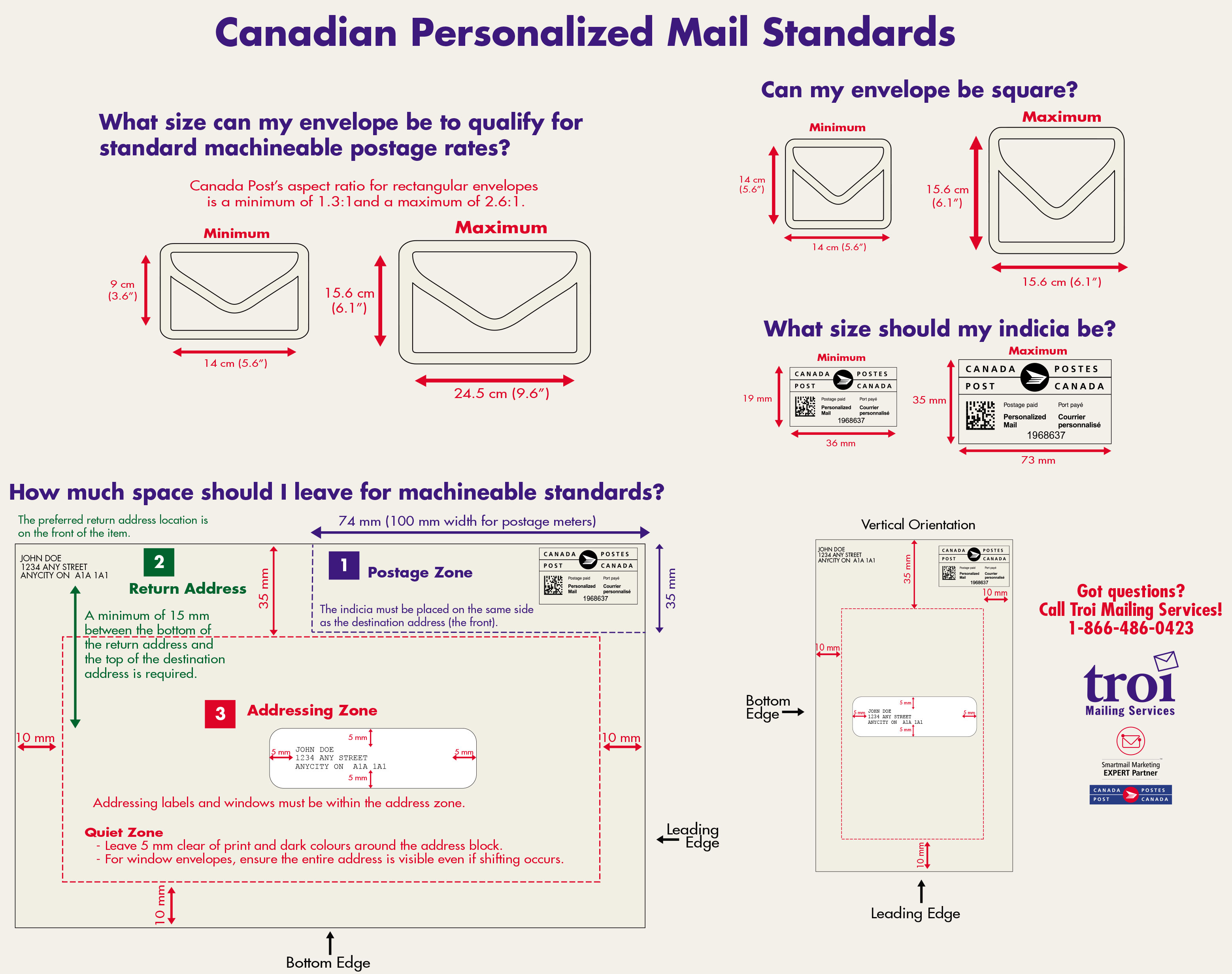Personalized Mail Template Guidelines
Canada Post Addressed Mail Template

Whether you’re mailing out a few hundred letters, or a few hundred-thousand, it’s imperative that the addressing is accurate so that the mail reaches its new home safely and without any unnecessary speed bumps.
The best way to ensure your envelopes and self-mailers are compatible with machine automation — and they don’t end up in a pile for extra handling or redelivery by Canada Post — is to ensure you follow the rules for standardized addressing.
Advantages of Using Our Direct Mailing Services
Whether your mail is being sent domestically or internationally, to a civic address or a rural route address, you must follow specific formatting requirements to meet the standards of Canada Post. When you choose Troi Mailing Services for your mailing needs, you won’t need to worry about these specifications as our data processing service takes care of the cleanup and formatting.
Rather than attempting to format your addressed mail on your own, we can make it easier for you. You can contact us directly or use these Canada Post mail templates as a guide to creating your standardized mail. These formats work seamlessly with Canada Post’s processing and delivery services.
These templates include the exact position of the:
- Postage Zone: The indicia must be placed here. The indicia identifies the direct mail service type and customer number. When using a commercial Canada Post account, indicias must be applied to this section.
- Return Address: A return address is optional. It provides the recipient with an option to respond to the sender if needed. The correct location for this is on the addressing side, in the top left-hand corner.
- Addressing Zone: Add the recipient’s name to the first line. Include the street address or post office box number on the second line. Finally, add the city, province, and postal code on the third line.
- Quiet Zone: This is the area on the envelope that should be left clear of any printing, images or dark colours.
If the elements mentioned above are appropriately aligned, your self-mailer or envelope printing and distribution should be relatively straightforward. However, getting the dimensions right isn’t the only thing you need to keep in mind. Apart from getting the positioning right, the correct formatting of the address is also essential.
Essential Tips for Formatting and Addressing Letters
- When mailing letters and parcels within Canada, it is recommended to write in uppercase to reduce confusion and illegibility.
- Write the city, the province and the postal code on the same line. Additional information such as a title, floor or unit number, should be included above the street address.
- Avoid using the # symbol. Use hyphens to separate the unit/suit/-apartment number followed by the street/civic number.
- The street type, street direction, and the names of provinces and territories should be abbreviated. You can find a complete list of abbreviations for street type, street direction, and provinces here.
Addressing envelopes can get complicated, especially for businesses handling large volumes. It’s better for you, as a business owner, to let our professional team handle the formatting and distribution to minimize the chances of your mail getting lost or being put on the side for redelivery due to some trivial technicality-based misunderstanding.
